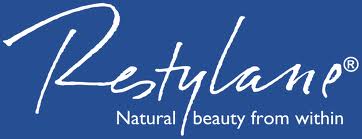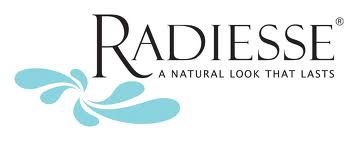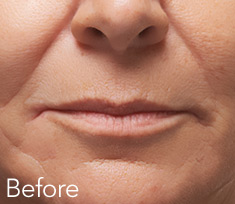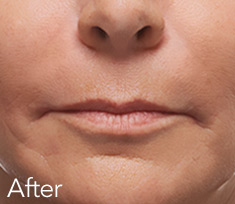|
Dr. Li offers various cosmetic procedures for her patients. If you are interested in any of the procedures, please feel free to discuss with Dr. Li during your visit.
Botox and Dysport:
 
Botulinum toxin A is a medication that is injected into the muscles beneath the skin to improve the appearance of fine lines and wrinkles. Currently BOTOX® (onabotulinumtoxinA) and DYSPORT™ (abobotulinumtoxinA) are two types of botulinium toxin A available in US. Botulinum toxin A is a safe, non-surgical alternative to other anti-aging treatments. A treatment takes only a few minutes in our office. Botulinum toxin A weakens the muscle into which it is injected. When a muscle normally contracts, such as when someone squints or frowns, it causes the skin above to crease. A botulinum toxin-weakened muscle leaves the skin smoother and less prone to wrinkling. The lines that result from frequent muscle contractions gradually fade, and in some cases, disappear.
Botulinum toxin A is frequently used for the following:
-
Frown lines between the eyebrows
-
Horizontal forehead creases
-
Crow's feet around the eyes
-
Lines on the upper lip caused by pursing the lips
-
Downturned corners of the mouth
-
Bunny lines on the nose
-
Neck wrinkles and bands
-
Facial sculpturing around jawline (Nefertiti Lift)
-
Lower face contouring (masseter hypertrophy)
Dr. Li will discuss with you and determine where to inject and how much medication to use. Following treatment, you will start seeing results in about 1-5 days, with peak results in 7-10 days. Over a period of 4-6 months, the botulinum toxin slowly wears off, and the affected muscles regain their ability to contract. Repeat injections are performed when muscle function returns.
Side effects of botulinum toxin injections include minor discomfort, redness, and occasional bruising at the injection site. These usually resolve in a few hours to a few days.
Although botulinum toxin has been FDA-approved and used safely for fine wrinkles, the treatment has received some bad press due to occasional poor outcomes or dangerous results. Keep in mind that these unfortunate events were primarily due to the medication’s use by unqualified individuals (non-physicians) or the use of a non-FDA approved source of botulinum toxin. In our office, Dr. Li offers a detailed consultation and performs all the injections herself.

Return to the list of our services
Dermal Fillers (Soft Tissue Augmentation):
  
Our skin loses its structural support as we age. This leads to thinning, wrinkles, and a loss of volume and shape. Sun exposure and smoking speed up the process. The lips, chin, cheeks, eyes, and corners of the mouth are the places where aging can be most easily seen.
Soft tissue augmentation treats aging skin. It improves the skin’s appearance by “plumping” up the tissue with dermal fillers. The dermal fillers replace tissues that are lost with age. Not only the filller can fill out wrinkles or folds, it can also be used for volume replacement and contour enhancement of the face. For example, a dermal filler can be used to fill out sunken cheeks, scars, undereye circle or used as nose shape sculpturing or chin enhancement. Commonly used dermal fillers include collagen, injectable hyaluronic acid (such as Restylane, Perlane and Juvederm) and calcium hydroxylapatite (Radiesse)
The dermal fillers used in soft tissue augmentation are delivered as a series of injections under the skin, often with a local anesthetic to minimize discomfort (especially around sensitive areas like the lips). Each treatment lasts 20–30 minutes, with careful attention to provide smooth, even insertion of the filler. The results last about 6 to 18 months, depending on the dermal filler used and the location of the injection.
Recovery from soft-tissue augmentation is usually quick and uncomplicated because there are no incisions or sutures. Side effects are minimal but may include minor bruising and swelling, which resolve within a couple days and can be covered easily with makeup.
Dr. Li will recommend a dermal filler based on the location to be treated, its history of safety and efficacy, its possible use with other treatments, and your personal preferences.
 
Return to the list of our services
Chemical Peels:
Chemical peels can be used effectively for a wide range of skin conditions including:
- Acne
- Fine lines and wrinkles
- Uneven pigmentation
- Shallow acne scars
- Sun-damaged skin
- Age spots
- Freckling
Chemical peeling can be performed on the face, neck, chest, hands, arms, or legs. It is most effective at changing the appearance on the surface of the skin. Effects of aging in deeper tissues, such as drooping eyelids and loose skin below the chin, must be treated with other procedures.
Chemical peels are categorized by how deeply the chemicals penetrate the skin: superficial, medium, or deep. Superficial peels use mild chemicals, such as alpha-hydroxy acids, which penetrate only the uppermost layer of the epidermis. Medium and deep peels use stronger agents.
A superficial chemical peel is usually sufficient to treat fine lines and wrinkles around the eyes and mouth. These may be referred to as "lunchtime peels". Patients with minimal skin damage often respond best to a series of superficial peels combined with a skin care regimen, including topical retinoids and daily sunscreen use.
A medium-depth peel is more effective for patients with moderate skin damage, including age spots, freckles, and actinic keratosis. It may be combined with another treatment such as laser resurfacing for maximum effectiveness.
Deep chemical peels may require bandages to be applied for 1-3 days following treatment. In addition, ointments and creams may be recommended to keep the skin moist. Cosmetics can be applied after about two weeks.
During treatment, most patients experience a warm sensation for about ten minutes, followed by some stinging. Anesthesia may be recommended for deep peels.
In general, the deeper the peel, the longer the recovery. A superficial peel produces redness similar to mild sunburn and lasts 3 to 5 days. Medium or deep peels can make the skin look severely burned, sometimes with blistering and peeling for 7 to 14 days. You may be prescribed pain relievers to reduce the discomfort following a deep peel.
Following a treatment, treat your skin gently. Avoid sun exposure because the renewed skin will be tender and susceptible to injury.
Following a chemical peel, your new skin will be tighter, smoother, and perhaps slightly lighter in color than before surgery.
Return to the list of our services
Lasers for Skin:
What are lasers?
Lasers have the unique ability to emit an intense beam of bright light of one color (wavelength). (Ordinary light is composed of many different colors and appears white.)
New, state-of-the-art lasers have revolutionized the treatment of a wide variety of skin disorders including spider veins, leg veins, birthmarks, hypertrophic scars, stretch marks, pigmented spots (freckles, age spots) and tattoos. They are also frequently recommended as part of a cosmetic rejuvenation program to create a more youthful appearance.
There are a variety of lasers, and each type produces a different color of light (wavelength) or distributes the light in a different pattern. These differences determine which tissue is affected by the laser and how it might be used to treat the skin. For instance, yellow-light lasers are particularly effective at treating red areas, such as birthmarks or visible blood vessels whereas red-light lasers are more effective at treating brown spots, such as age spots.
Some types of lasers for skin called ablative lasers are used to heat, cut, and remove superficial skin tissue such as pigmented lesions or blood vessels. Non-ablative lasers work beneath the skin to reduce fine lines and wrinkles, leading to improved skin tone with minimal side effects and little recovery time.
Ablative lasers and their uses
Carbon dioxide (CO2) laser
CO2 lasers deliver powerful, focused light that can make “bloodless” incisions in the skin or vaporize unwanted tissue. They are often used for skin resurfacing, removing fine lines and wrinkles, smoothing acne scarred skin, and improving general skin contour. The CO2 laser beam can also be “defocused” and pulsed so that it can be used to remove warts, actinic keratoses, or superficial skin cancers.
Erbium (ER):YAG laser
Er:YAG lasers are often used to treat facial wrinkles, scars, and pigmentation that causes uneven skin tone.
Yellow light laser
Yellow light is more readily absorbed by hemoglobin in the body than other colors. This property makes yellow light lasers particularly effective for treating red areas of the skin, such as rosacea, port wine stains, red birthmarks, visible blood vessels, hemangiomas. These lasers are gentle enough to be used for treating children, such as those with birthmarks.
Green light laser
Green light lasers may be used to treat age spots (café-au-lait spots) and lentigines (freckles), as well small blood vessels.
Red light laser
The very short, intense light pulses emitted by red light lasers may be used for tattoo removal and brown-pigmented lesions, such as freckles or age spots. By altering the pulse duration, red light lasers may also be used to remove unwanted hair.
Ablative skin resurfacing
Ablative resurfacing involves the use of CO2, Erbium:YAG, and/or other lasers to remove the entire epidermis (superficial layer of skin) and portions of the dermis. Skin that may be damaged by age or other conditions is replaced by a layer of new youthful appearing skin. This treatment improves skin texture, removes fine and moderately deep wrinkles, and treats pigmented areas. While results can be impressive, there is discomfort, and the unpleasant healing period of 1-2 weeks during which time there is swelling, oozing and crusting of the skin.
Non-ablative lasers
Unlike traditional lasers, non-ablative lasers affect the tissue in the deep layers of skin. The epidermis (superficial layer of skin) is not visibly disrupted so there is little if any downtime.
Because of their non-wounding properties, non-ablative lasers are slowly becoming more commonly used for a variety of conditions, including acne scars, active acne, stretch marks, and problems with pigmentation.
Fractional Resurfacing
Fractional resurfacing devices combine the benefits of non-ablative lasers and their ablative counterparts (such as CO2 lasers). The procedure works by creating multiple zones of skin injury with intact skin between the treated zones. This stimulates collagen renewal, which leaves the skin smoother and softer as it heals.
Side Effects and Safety
There are rarely any permanent problems with laser therapy. Occasionally some lightening of the skin occurs. Normal skin color returns within three months after treatment of vascular lesions. Although rare, a slight depression may develop, which usually resolves in a few months. Scarring occurs in less than one-tenth of one percent of all cases. Because lasers produce an intense bright beam of light, everyone in the treatment room is required to wear protective eyewear.
Return to the list of our services
Tatoo Removal:
Some people with tattoos may later choose to have one or all of them removed. Fortunately, there are safe and effective methods to successfully remove them.
Because the location, color, shape and size of each tattoo is unique, the removal procedure must be personalized to suit each person. For instance, tattoos applied by non-professionals may be more difficult to remove because the dye may penetrate different layers of skin, whereas professionally-applied tattoos are usually more uniform. Darker inks (deep blue or black) are more difficult to remove than colored inks. Some newer inks and colors may be difficult to remove entirely.
The most common methods for removing tattoos are:
- Laser treatment - The type of laser used depends upon the colors of the tattoo. In most cases, multiple treatments will be required. This is the most popular method for most tattoo removals.
- Dermabrasion uses a rapidly rotating brush to remove the topmost layer of skin.
- Surgical excision, during which the tattoo is removed with a scalpel and the wound is closed with stitches.
Side effects are usually minor but may include discoloration at the treatment site, infection, or some scarring. For tattoos that are difficult to remove, there may be residual pigment in the treatment area.
Return to the list of our services
|